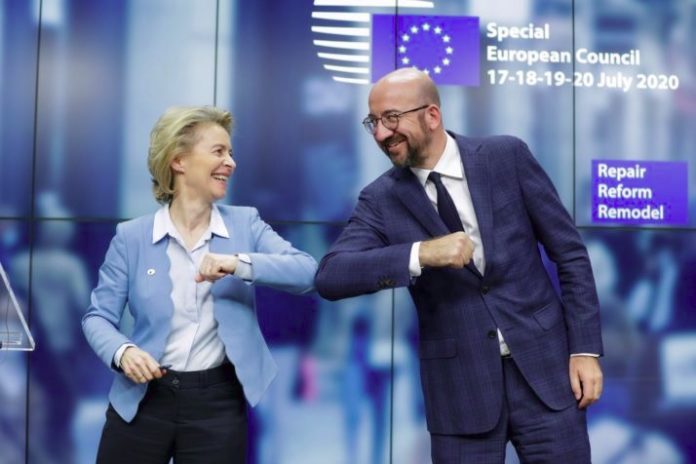European assets have experienced sustained volatility in recent times, having continually traded within an ever-depreciating range since the Brexit vote in 2016.
However, there are signs that European stocks and the single currency may be about to embark on an upward trajectory, particularly following the unveiling of a potentially effective vaccine for the coronavirus.
The vaccine, which was developed by Oxford University in the UK, caused the pan European Stoxx 600 to recoup previous losses and the Euro to make significant gains.
What’s more, EU’s leaders finally agreed a 750 billion Euro coronavirus stimulus fund after five intense days of negotiation. We’ll discuss this further below, while asking how this has impacted on the Euro in particular.
How has the Euro Fared in the Build-up to This Agreement?
We spoke earlier about the factors that have weighed negatively on the Euro of late, and up until the most recent announcement, this included the difficult negotiations pertaining to an EU stimulus package for tackling the socio-economic impact of Covid-19.
According to Jeffery Halley from Oanda, the uncertainty surrounding these talks caused the Euro to stagnate at the end of last week, while the further suggestion that negotiations had actually stalled caused a slight decline in the value of the single currency.
This only served to compound the relative plight of the Euro, and the range of issues that continue to hinder its growth and cause it to experience sustained losses against the US Dollar.
This changed dramatically on Monday, however, when EU leaders finally agreed the details of the package and entered into initial discussion concerning a proposed 1.1 trillion Euro budget for the period between 2021 and 2027. Both of these measures will help to support short and long-term economic growth in the wake of Covid-19, and they’ve certainly delivered some relief to the single bloc and its core range of assets.
What has Been the Reaction to the Agreement?
There’s no doubt that the recent announcements have provided a much-needed boost to the ailing Euro, which strengthened to its highest level in two years against the previously dominated greenback.
Not only this, but commodity currencies gained as risk-on moves continued in the wake of the stimulus deal being concluded, and this trend is likely to persist for the foreseeable future at least.
Of course, the rise of the EUR/USD pairing has also been exaggerated by the relative decline of the dollar, but the resurgence of the single currency remains the single most telling and seminal factors.
Interestingly, the EU Commission’s plan for the longer-term, 1.1 trillion Euro recovery fund should also help to sustain the gains made by the single currency over a longer period of time.
Sure, the terms of this package will be subject to agreement between the European Parliament and member states, but these negotiations should not be as intense or challenging as those that preceded the Covid-19 stimulus fund.























